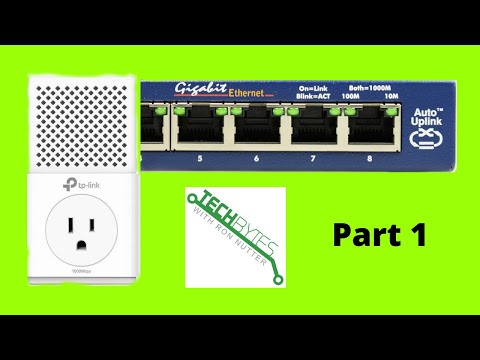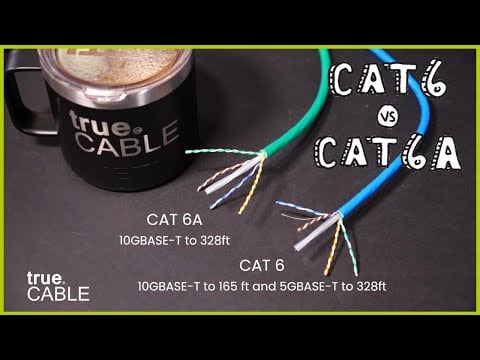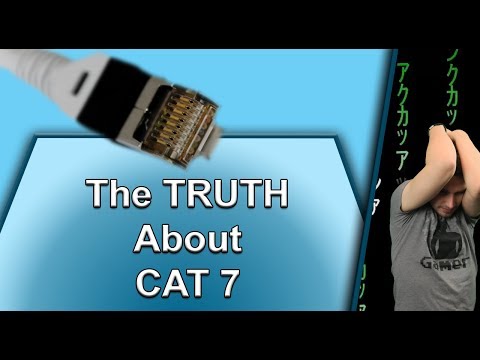PoE or power over ethernet explained | CCNA 200-301
Power over Ethernet is a revolutionary technology that integrates data and power on the same cables.As you can see with non poe device you need a power cable to power on the device and copper cable for network data.But with poe It allows devices to receive power in parallel to data over existing twisted-pair Ethernet infrastructure without making any modifications in it. Lets try understand this with an exampleWhen you walk around any building and you see electrical power outlets everywhere. When finishing the interior of a building, electricians run electrical cables and install electrical outlets to any and every location that might need power. Such as fridge, tv, pc etcAs a network engineer you might have taught that the electrician might have provided enough power to the wiring closets to power on the networking devicesPower over Ethernet (PoE) changes that thinking so that the responsibility to provide electrical power to some devices can fall to the network engineering team. the LAN switch connected to the cable can supply that power over the cable. Power over Ethernet Terminology Let us understand the terminologies used in poeWith PoE, some device, typically a LAN switch, acts as the Power Sourcing Equipment (PSE)—that is, the device that supplies DC power over the Ethernet UTP cable (as shown in Figure A device that has the capability to be powered over the Ethernet cable, rather than by some other power connector on the device, is called the Powered Device (PD). Why use POE? Advantages of using PoETime and cost savings - by reducing the time and expense of having electrical power cabling installed. Network cables do not require a qualified electrician to fit them, and can be located anywhere.Flexibility - without being tethered to an electrical outlet, devices such as IP cameras and wireless access points can be located wherever they are needed most, and repositioned easily if required.Safety - POE delivery is intelligent, and designed to protect network equipment from overload, under-powering, or incorrect installation.Reliability - POE power comes from a central and universally compatible source, rather than a collection of distributed wall adapters. It can be backed-up by an uninterruptible power supply, or controlled to easily disable or reset devices.Scalability - having power available on the network means that installation and distribution of network connections is simple and effective.Since it supplies DC power over the Ethernet cable, so the device does not need an AC/DC converter Devices that use Power over EthernetSome of the commonly used devices that use POE areVoIP phones - the original POE application. Using POE means phones have a single connection to a wall socket, and can be remotely powered down, just like with the older analog systems.IP cameras - POE is now ubiquitous on networked surveillance cameras, where it enables fast deployment and easy repositioning.Wireless devices such as - Wifi AP’s and RFID readers are commonly PoE-compatible, to allow remote location away from AC outlets, and relocation following site surveys.PoE Operation Every electrical device can be harmed by receiving too much current into the device, which is why electricians install circuit breakers and why we use surge protectors. Applying power over an Ethernet cable could have the same effect, harming the device on the other end, if the device does not support PoE. So PoE must (and does) have processes in place to determine if PoE is needed, and for how much power, before applying any potentially harmful power levels to the circuit. PoE, standardized by the IEEE, extends the same IEEE auto-negotiation mechanisms. In fact, the mechanisms need to work before the PD has booted, because the PD needs power before it can boot and initialize. By using these IEEE auto-negotiation messages and watch ing for the return signal levels, PoE can determine whether the device on the end of the cable requires power (that is, it is a PD) and how much power to supply. Step 1Do not supply power on a PoE-capable port unless negotiation identifies that the device needs power. If yesStep 2Use Ethernet auto-negotiation techniques, sending low power signals and monitoring the return signal, to determine the PoE power class, which determines how much power to supply to the device. Step 3 If the device is identified as a PD, supply the power per the power class, which allows the device to boot. Step 4. Monitor for changes to the power class, both with auto-negotiation and listening for CDP and LLDP messages from the PD. Step 5 If a new power class is identified, adjust the power level per that class. The negotiation processes result in the PD’s signaling how many watts of power they would like to receive from the PSE. Thats it for this sessionIn my next session i will discuss about interface and cable issuesThank you for watching please do like share subscribe and hit the bell icon
#poe #poweroverethernet #CCNA #training
























